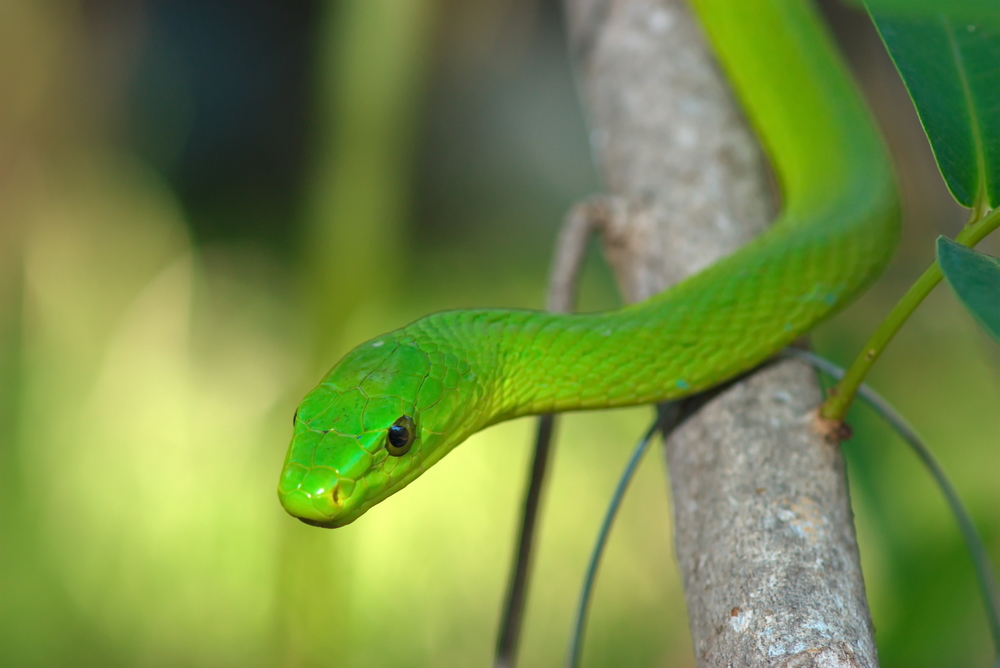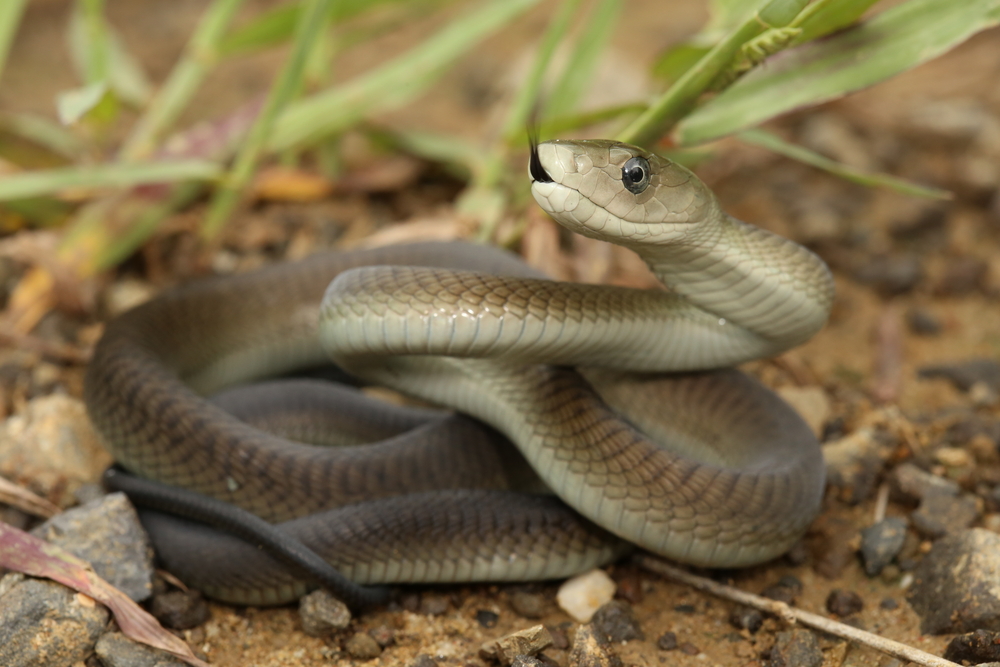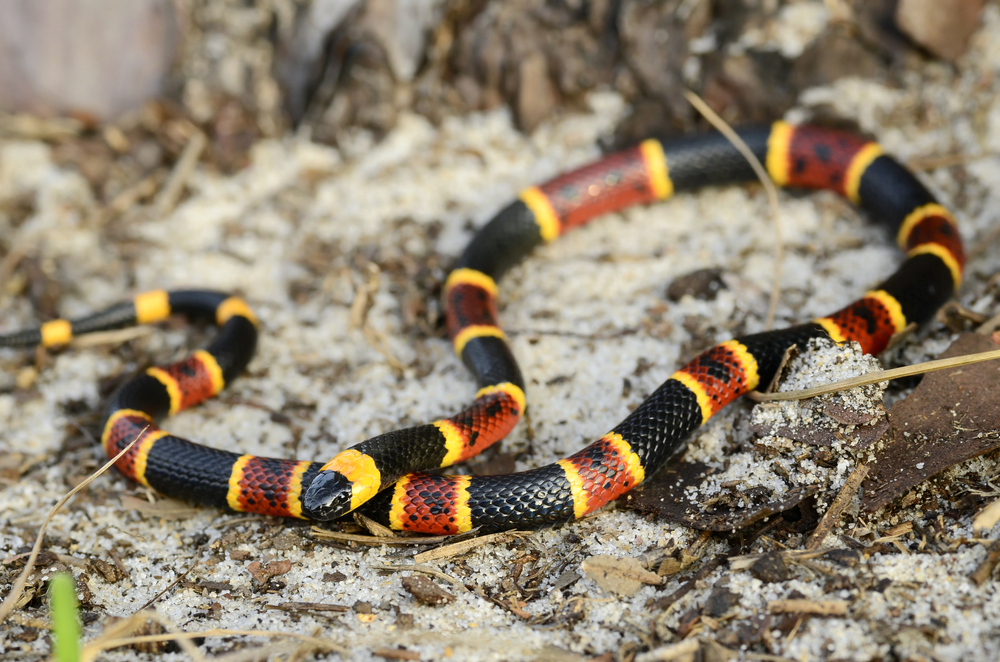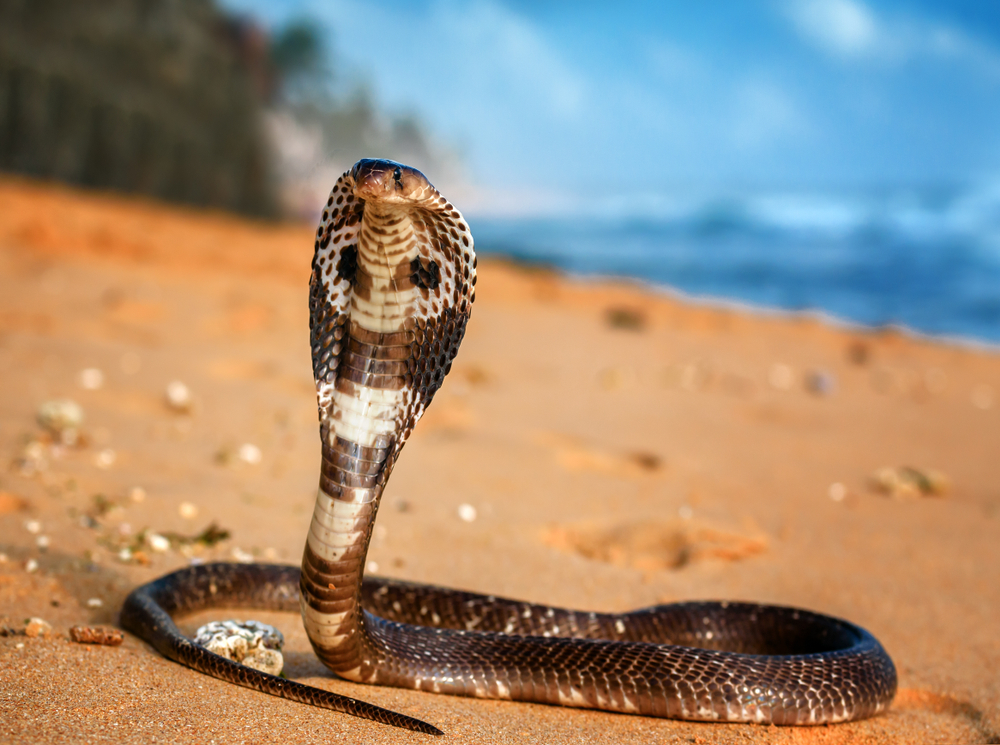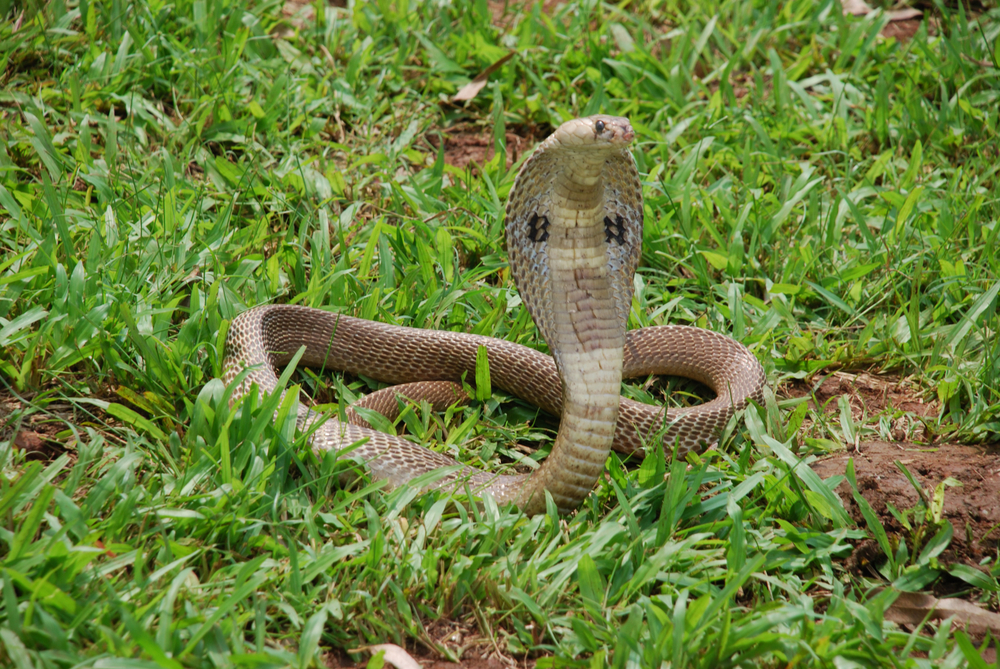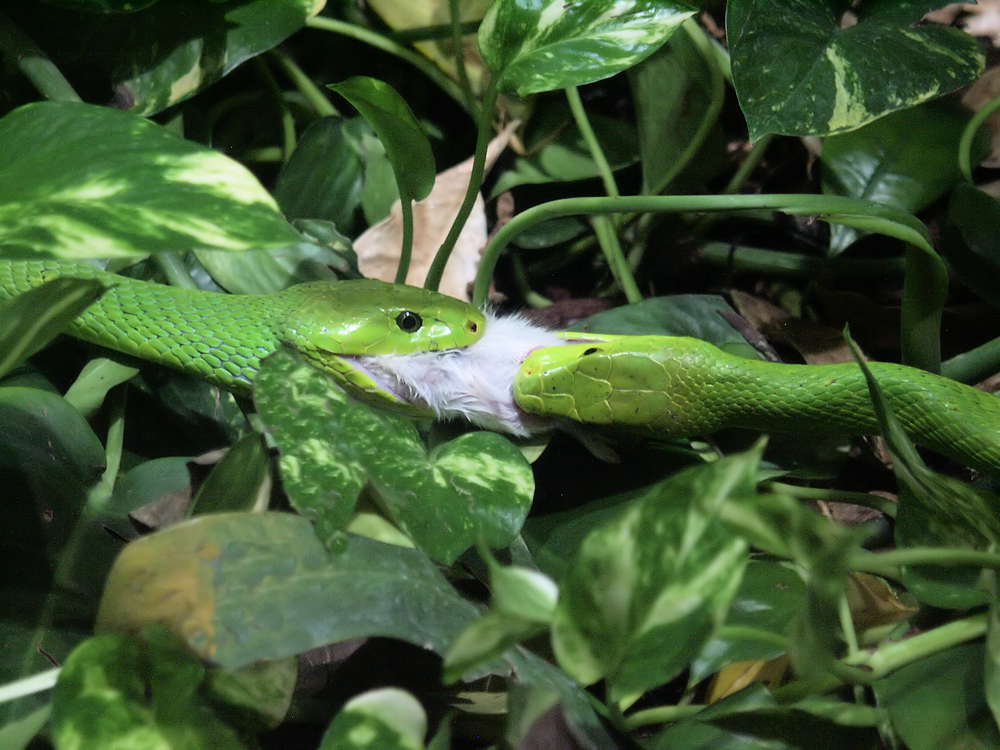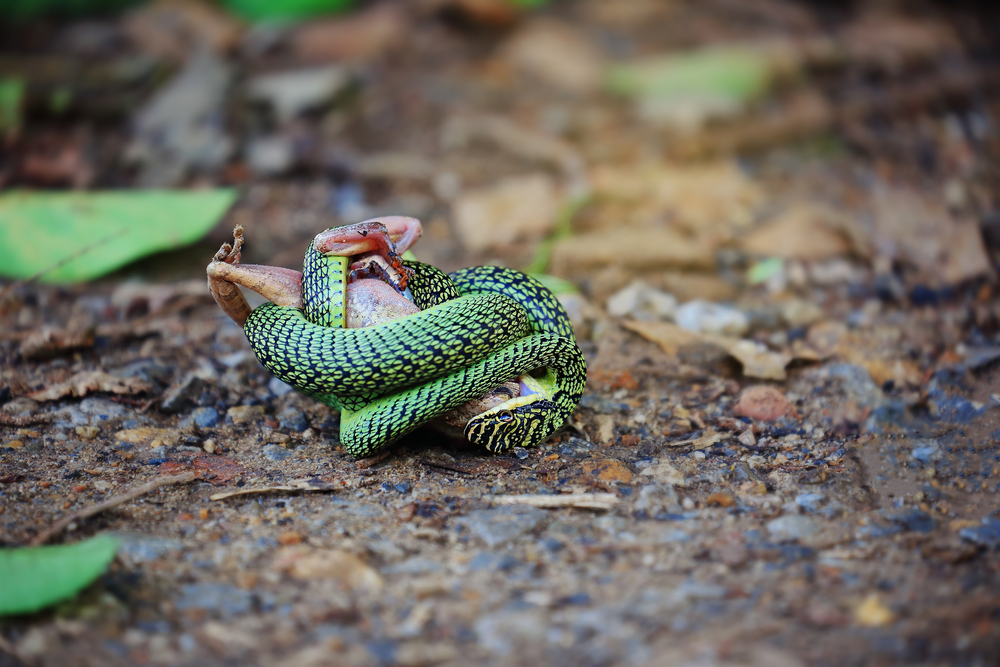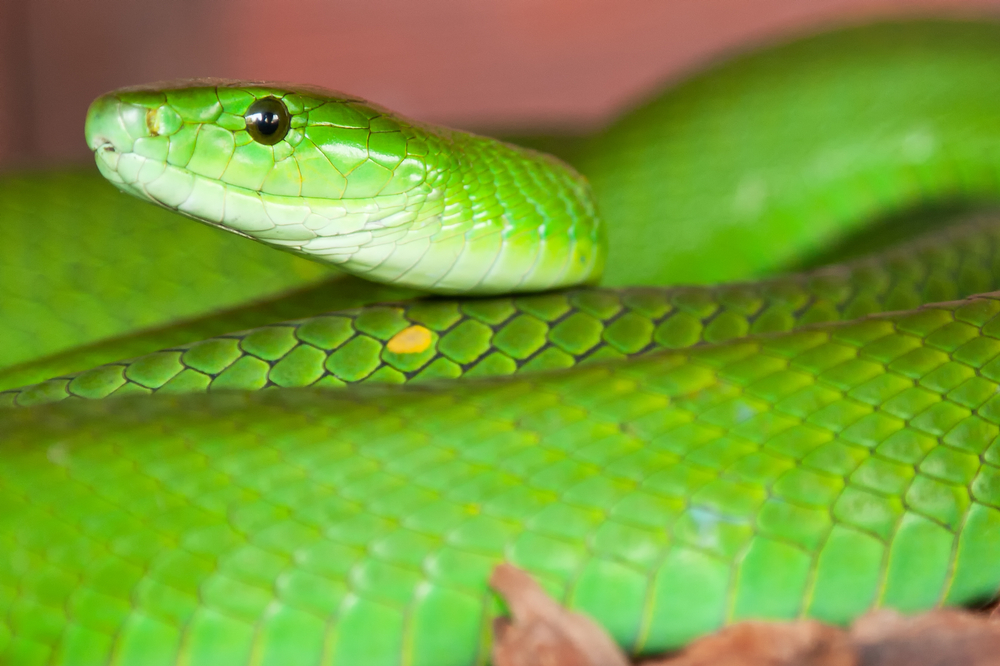The Green Mamba and the Black Mamba are often confused due to their shared genus Dendroaspis, but they have several key differences:
1. Coloration and Appearance:
- Green Mamba (Dendroaspis viridis): As its name suggests, it has a bright green color, providing excellent camouflage in its arboreal habitat. This coloration helps it blend seamlessly into the foliage.
- Black Mamba (Dendroaspis polylepis): Despite its name, the Black Mamba is usually not black. Its skin color ranges from gray to dark brown, but its name derives from the inky black color inside its mouth.
2. Habitat:
- Green Mamba: Primarily found in the coastal regions of East Africa, the Green Mamba is an arboreal species, spending much of its time in trees.
- Black Mamba: In contrast, the Black Mamba, found in sub-Saharan Africa, is largely terrestrial, though it can climb trees and is often found in rocky outcrops and savannas.
3. Size:
- Green Mamba: It is smaller than the Black Mamba, typically reaching lengths of about 6 to 8 feet.
- Black Mamba: One of the largest venomous snakes in Africa, the Black Mamba can grow up to 14 feet in length.
4. Behavior and Temperament:
- Green Mamba: Generally shy and less aggressive, it tends to avoid humans and will typically flee rather than attack.
- Black Mamba: Known for being more aggressive and territorial. When threatened, it can be highly dangerous and can strike repeatedly.
5. Venom:
- Both species possess potent neurotoxic venom, but the Black Mamba’s venom is considered more deadly due to its composition and the amount it can deliver in a single bite.
Despite these differences, both are highly respected for their venomous capabilities and are treated with caution in their respective habitats. Understanding the distinctions between these two species is important, especially in regions where they are native.



































































